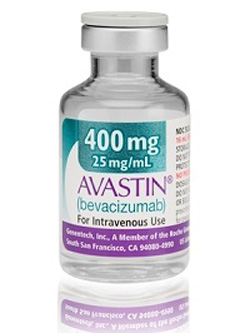 In April, the nonprofit Cochrane Collaboration went after Roche's ($RHHBY) Tamiflu, saying the $2 billion governments have spent stockpiling the flu fighter has been money "down the drain." Now the British organization, which reviews clinical trial data to determine the value of pharmaceuticals, is going after another Roche product: Lucentis, which is used to treat the blinding eye disease age-related macular degeneration (AMD).
In April, the nonprofit Cochrane Collaboration went after Roche's ($RHHBY) Tamiflu, saying the $2 billion governments have spent stockpiling the flu fighter has been money "down the drain." Now the British organization, which reviews clinical trial data to determine the value of pharmaceuticals, is going after another Roche product: Lucentis, which is used to treat the blinding eye disease age-related macular degeneration (AMD).
The upshot: Cochrane says Avastin, a Roche cancer drug used off-label for AMD, is just as safe as Lucentis. And that could undermine a cornerstone of Roche's marketing case for the eye drug.
A new review published Monday in The Cochrane Library journal put the two drugs head to head. Lucentis and Avastin have the same mechanism of action--they both choke off harmful blood vessels--but Avastin's lower price has driven eye doctors around the world to substitute it for Lucentis. Roche has long argued that Lucentis is the safer of the two for AMD because it's formulated for use in the eye.
Cochrane says, quite simply, that the safety claims aren't true. After reviewing 9 trials involving 3,665 patients--including three studies that have yet to be published--the organization concluded that Avastin does not increase the risk of death or serious side effects when compared with Lucentis.
"This review addresses a question of immense importance to health systems in many countries," said David Tovey, editor-in-chief of The Cochrane Library, in the press release. "One of the many considerations in decision-making at policy level is not just understanding how effective treatments are, but also weighing up evidence of their safety."
The Avastin-vs.-Lucentis debate has been raging for years but has been particularly contentious in Europe, where governments have been scrambling to combat rapidly rising prescription drug costs. In July, the French government amended its social security budget bill to allow doctors to substitute Avastin for Lucentis, estimating the country would save about €200 million ($273 million) annually.
The move came just weeks after Italy's government said it would fund the treatment of AMD with Avastin. Furthermore, Italian antitrust regulators are taking action against Roche and its marketing partner Novartis ($NVS), seeking €1.2 billion ($1.6 billion) to settle allegations that the two companies colluded to try to persuade doctors to use Lucentis instead of Avastin.
In the U.S., a study published in June suggested that if Medicare patients were to receive Avastin for AMD instead of Lucentis, the healthcare system would save nearly $3 billion a year.
In statements acquired by Reuters, both Roche and Novartis expressed doubts about the Cochrane review. Novartis said Lucentis has a well-established safety profile in the eye, whereas Avastin "has not been systematically reviewed by health authorities." Roche said Cochrane's review appears to be based on studies that were not designed to assess differences in safety between Avastin and Lucentis.
Cochrane said in its statement that it's planning a larger review to "help reduce the remaining uncertainties around the relative benefits and safety of these drugs."
Cochrane continues to be a thorn in Roche's side. After Cochrane researchers published a paper in the British Medical Journal claiming that Roche's Tamiflu and GlaxoSmithKline's ($GSK) rival drug Relenza were not effective enough to justify government stockpiling, Roche shot back, accusing Cochrane of failing to include all the relevant data in its assessment. No doubt Roche will have more to say on the Lucentis controversy as Cochrane continues its analysis.
- here's Cochrane's release
- read more at Reuters
Special Report: Top 10 best-selling cancer drugs of 2013 - Avastin